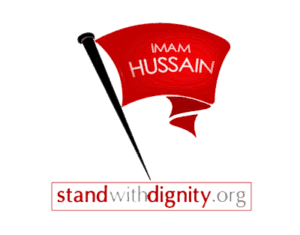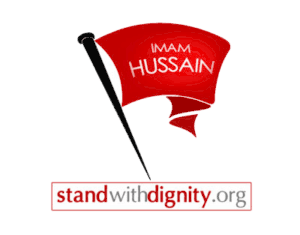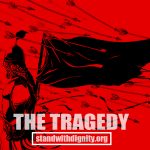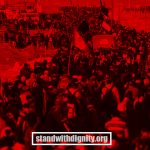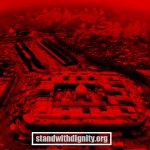Prof. Christopher Clohessy
Pontifical Institute for Arabic and Islamic Studies, Rome
The urge to draw contrasts between outstanding figures is highly seductive and can at times prove theologically perilous. With little effort, for example, one could find parallels between Mary, the mother of Jesus (particularly as she is portrayed in Catholic theology) and Fâṭima, the mother of al-Hussain. Nor would we struggle to draw lines of convergence between two enigmatic personalities such as the Christian Saint Teresa of Avila (or Juliana of Norwich or Hildegard of Bingen for that matter) and Muslim mystic Râbica al-cAdawiyya of Baṣra. Some such resemblances are glaringly obvious, while others remain subtle and abstruse; nor do they necessarily suggest equity in the persons compared, but serve only to highlight virtue and hints of spirituality. Quite evidently, as we indicated before, they can be valid without being dogmatic, useful without being incontestable. What follows are some possible and tentative parallels between Jesus in Christian theology and al-Hussain in Islamic, but specifically Shîcî, theology.
Examining the Karbalâ’ event and the type of theology and spirituality constructed around it, it is difficult not to think of the life of Jesus and the Christian theological and spiritual tradition. The claims that Jesus makes and that Christians make about him go far beyond the claims of al-Ḥusayn and the beliefs of the Shîca about who he was. Yet, for example, in the issues of the nature of the Imamate, the atonement of al-Ḥusayn’s martyrdom and the intercessory prerogatives, one gets powerful reminders of the sort of things that Christians posit about Jesus. This is not to forget that Christians and Muslims mean different things when they use words like ‘redemption’ and ‘atonement’. However, there are strong similarities in the sort of traditions that are built up around holy people, leaders of the community and their actions. Perhaps that is the most important point; that more often than not the similarities lie in the traditions that have been built up rather than in the reality of the lives themselves.
With these thoughts as a foundation, it might be interesting to look at a handful of the possible parallels in the lives of two people who appear to have lived good lives and died terrible deaths, though not without purpose: Jesus of Nazareth and al-Ḥusayn.
With Faces Set
The authors who examine the Karbalâ’ event stress the firmness of purpose in al-Ḥusayn as he makes his fateful journey from Mecca towards Kûfa. He goes with an almost certain knowledge of what lies ahead, and apparently ready to face martyrdom. The Gospel accounts posit this resoluteness in the face of death in Jesus. For both men, death appears to be something divinely preordained, although both are given the possibility of escape. The last moments of their lives are spent in fear, tension and a struggle with impending death. For both, death seems to be a necessary outcome that could, but should not be shunned. The picture of Jesus in the garden of Gethsemane is not unlike that of al-Ḥusayn on the night before Karbalâ’, a picture of lonely anguish and despair. Angelic intervention, or at least the possibility of such assistance, is traditional to the stories of both men. Both face death having been abandoned by many who once followed them; and the fickle behaviour of the citizens of Kûfa is not unlike that of those who shouted ‘hosanna’ and shortly after that, ‘crucify him’ in the Passion Narratives of Jesus. The accounts of al-Ḥusayn’s last moments on the battlefield, with everyone around him killed, are not dissimilar to Jesus on the cross, feeling the loss even of God. For the Shîca, al-Ḥusayn was an innocent and sinless man, who was led to his death. While authors like Ayoub warn of extremists who attempt to make Jesus and al-Ḥusayn alike in every respect, the idea of being led like a lamb to its slaughter resonates deeply in the lives of both men.
All Creation Groans
The Shîca regard the death of al-Ḥusayn as a ‘cosmic’ event, touching all of human history, of nature and of the universe. The entire history of the world (and even prior history) revolves around the divinely preordained Karbalâ’ event. It was with the Imâms that the primordial history of creation began, and with them it will be judged and consummated. In the interim, all of humankind and the whole of creation participate in the lament over al-Ḥusayn’s death. The sixth Imâm, Ğacfar al-Ṣâdiq, insists that all creation, visible and invisible, weeps for al-Ḥusayn: it is hard not to be reminded of Saint Paul’s declaration that «the whole of creation groans, awaiting redemption» (Romans 8: 22). A major incentive for this weeping is that sacrificial deaths such as that of al-Ḥusayn have redemptive powers, which are rendered efficacious when the believers themselves take an active part in the suffering. Again we are reminded of Paul, who writes: «Now I rejoice in my sufferings for your sake, and in my flesh I complete what is lacking in Christ’s afflictions for the sake of His body, that is, the Church» (Col. 1: 24).
Certainly, some of the poetical evocation of the martyrdom of al-Ḥusayn appears close to the Suffering Servant songs of Isaiah,[1] while elements in the memorial plays and the mağâlis seem to coincide with Christian commemorations during Holy Week (particularly in their more fervent expressions in some parts of the Catholic world). Some of the lamentation poetry conflicts with traditional accounts of a brave al-Ḥusayn going valiantly to his death, presenting instead the image of a weak and helpless man. There is no doubt that the Passion Narrative of St. John’s Gospel presents a different account of Christ’s Passion when compared to the Synoptic (Matthew, mark and Luke) accounts. The Jesus of John is a man in control, apparently free of anguish and doubt, whose sufferings and human weakness are not highlighted as they are in the Synoptic narratives.
When it comes to weeping, Fâṭima is a prominent figure, and it is not difficult to compare her to the mother of Jesus. Fâṭima is ‘the radiant one’, the ‘mistress of the house of sorrows’ (bayt al-aḥzân), who provides a continuity between the suffering of her family and the grief of the devotees. Even in the world to come, Fâṭima remains the ‘mistress of the house of sorrows,’ where her constant tears (until the vindication) kindle God’s wrath against her son’s murderers and His mercy and forgiveness for the community of believers. “All things weep in emulation of her tears, and the tears of the faithful here on earth are but a way of sharing in her sorrows and a means of bringing consolation to her broken heart.”[2] It is undeniable that there are strands of thought presented here that are adjacent to the popular devotion and piety that surrounds Mary, the mother of Jesus.
Part of ‘creation groaning’ is Karbalâ’ itself; just as the event transcends the borders of time and space, so too the place of the event is designated as being holy. No less interesting are the traditions of the history of Karbalâ’ in the lives of the prophets who lived prior to the event, and even in the accounts of the animals there. For example, Adam passed through Karbalâ’ and tripped there, gashing his foot and causing blood to flow, as if in emulation of al-Ḥusayn, causing Adam to weep in that place. Nûḥ’s Ark, adrift on the waters, was tossed about as if in a storm as it passed over the place where al-Ḥusayn would die and, like Adam, Nûḥ wept there. Ibrâhîm, passing through Karbalâ’ on horseback, fell and cut his head, causing it to bleed (in emulation of al-Ḥusayn). Even the horse he was riding was possessed by grief in the place. The sheep of Ishmâcîl refused to graze there, and told him why. cÎsâ, wandering in that area, found his path blocked by a lion which proceeded to tell him the story. Another tradition tells of a group of gazelles sitting in lamentation (mağâlis) and relating the event to cÎsâ.
In addition, at the very moment of al-Ḥusayn’s death, creation reacted in a startling way. His riderless horse, in an important and disquieting event in the commemoration events, beat its head upon the ground until it died. The birds stopped singing, the heavens darkened, the sun was eclipsed, the stars were visible by day and collided with one another, a strong gale blew and it rained blood for forty days. Muḥammad, according to tradition, predicted such earthly cataclysms at the death of al-Ḥusayn as the earth being shaken to its foundations, the mountains rocked, the seas rising up and the heavens shaken. This sort of apocryphal language is similar to Biblical terminology used for descriptions of the end times and for some of the events that occurred at the moment of Jesus’ death (rocks being split, tombs opening, dead people rising and the veil of the Temple being split in two).
Al-Ḥusayn’s very blood is understood as a source of healing and judgment, bringing disaster to his murderers but healing to his community. One cannot but be reminded of Pontius Pilate, carefully washing his hands whilst the crowd called down the blood of Jesus upon themselves and their children.[3] Nor is it far from the theological claims of Christianity concerning the Blood of Christ. Suffice to say that Karbalâ’ itself is constituted part of the redemptive quality of the event and has assumed a salvific nature, becoming a sort of Calvary for its devotees.
By The Healing Waters
The issues of mediation and of the intercessory prerogatives are crucial to understanding the redemptive qualities attached to the Karbalâ’ event, and the martyrdom of all the Imâms. They are no less important in grasping Christ’s redemptive act, which, like that of al-Ḥusayn, is perceived as something ongoing. As Ayoub writes: “Both [Christianity and the Shīca] accept a mediator between God and man, one whose essential being and place in human history plays a determining role in the Divine plan for creation, revelation and salvation.”[4]
Elsewhere, the same author writes that the Imâms are the true mediators between God and humankind, and were with God from the beginning as His first creative act. Al-Ḥusayn died for the sake of Islam, so as to free it from influences that were corrupting and distorting it. While suffering is not a good thing in itself, it can nevertheless be transformed and great good drawn from it. This, in essence, is the meaning of al-Ḥusayn’s death for the Shîca. Having died he now, in a manner reminiscent of the words of the New Testament Letter to the Hebrews about Jesus, ‘lives to intercede’ for the faithful community, whose own suffering is in some sense an extension of his and is in some way joined to his. The concrete symbol of his divinely given prerogatives is the ‘pool’ or ‘basin’ of Kawthar. The waters of this pool cleanse the blood and tears of the ‘people of the house’ and of all associated with them. Here, at this pool, will the faithful be gathered; and it is beside this pool that cAlî stands as judge, ready to turn evildoers away from its water on the ‘day of thirst’. Once again, it is hard not to find parallels with the idea of the ‘fountain of life’ and of the river that flows ‘from under the sanctuary,’ with all the Biblical promises attached to these.
In general then, and taking into account all the pitfalls and contrariety, parallels between Jesus and al-Ḥusayn (and in the theology constructed around them) are not without precedence. Even the traditions surrounding their respective conception, birth and infancy contain striking similarities (although hagiography, no matter who its subject, ought to be read with prudence). Both Mary and Fâṭima were pious, poor and sustained by God. The announcement to Muḥammad by Ğibrîl of al-Ḥusayn’s conception contained a prediction of his death, similar to the prophecies made about the infant Jesus by Simeon. According to Islamic tradition, both babies were carried in the womb for only sixth months. Both Mary and Fâṭima were subject to angelic visitations, and the Qur’ânic account of cÎsâ’s birth is close to the traditional accounts of the birth of al-Ḥusayn. Ğibríl intervenes in the naming of Fâṭima’s child, just as Jesus’ own name came to Mary from the lips of the angel. Both births produce and outburst of rejoicing in heaven and on earth, with one note of sadness; as angels visit Muḥammad to congratulate him on the birth of his grandson, they console him too over al-Ḥusayn’s future martyrdom (as Mary would be consoled by Simeon). Not unlike the Holy Family of Nazareth, the ‘people of the house’ are subject to privation and poverty; and God supplying their needs through miraculous intervention finds an echo in the accounts of the Holy Family in the Apocryphal Gospels. This intervention is to be found during the childhood of al-Ḥusayn and of his brother al-Ḥasan. Al-Ḥusayn is himself a man of great knowledge (related to the Imamate and including an ability to predict his own martyrdom), wisdom, compassion, courage, piety, miraculous ability, humility and generosity. All of this relates to his being ‘close to’ or ‘friend’ (walî) of God: and all of these are virtues that are highlighted in the life of Jesus, who, we are told, ‘grew in wisdom’ from childhood.
In the final analysis, the Shîca would posit of al-Ḥusayn that he saved Islam by his death. Of Jesus, Ayoub writes: “Yet Christ, as were all the messengers of God before him and after him, was a saviour in that he, by his message, helped to save humanity from error.”[5]
An important element is the angelic activity during the conceptions and births of Jesus and al-Ḥusayn, as well as the cosmic rejoicing when the births occur. In each case, so important an occasion merits a heavenly annunciation. In both cases too, there is a questioning of the angelic herald, although for different motivations. The annunciation of al-Ḥusayn is filled with the forewarnings of his martyrdom, as well as with predictions about his status and future achievements. In the case of Jesus, while the predictions about his status and future achievements are distinctly present, the forewarnings are absent, and are only spoken by Simeon when the child is presented in the temple by Mary and Joseph. In fact, there is a dream motif concerning Jesus’ death, but it comes long after the narratives of his birth; after his arrest, the wife of Pontius Pilate reports having «suffered much over Him today in a dream» (Mt. 27: 19). The content of this obviously disturbing dream is not revealed, but it is certainly within the context of the death of a man whom the wife of Pontius Pilate declares ‘righteous’.
While there is a cosmic reaction recorded for both births, these are moderately different. In the case of Jesus, the rejoicing of heaven is represented by the angels, who proclaim the news to shepherds, representing all the people of the earth. At the birth of al-Ḥusayn, the texts depict an outpouring of joy, among the angels, the people of Paradise, the inhabitants of the earth and even those in Hell, whose punishment is lightened for the occasion. The whole cosmological effect of al-Ḥusayn’s birth is underscored by the Shîcî texts; in the Christian accounts of the birth of Jesus, the angels’ jubilation and glorification is entirely centered upon God, and the cosmological effects of the Incarnation still lie in the future; conversely, the birth of al-Ḥusayn has an immediate consequence for those in Heaven and Hell, a portend of his martyrdom, which, as a ‘cosmic’ event, touches all of human history, of nature and of the universe.
Both Mary and Fâṭima gave birth under testing circumstances; Mary’s was the physical discomfort and immense poverty of her surroundings, while Fâṭima’s was psychological, her delivery of al-Ḥusayn marred by the predictions of his murder. The Shîcî texts use Qur’ânic wording to describe how she conceived and gave birth «with reluctance» (Q. 46: 15). In this sense too, both births were overshadowed by a sense of doom – Mary’s just after the birth and Fâṭima’s before it.
Both Mary and Fâṭima are mothers of sons who will be killed, and regarded, each in his own unique way, as a martyr. Fâṭima knows this even before her son is born, so that her sorrow is immediate. Mary’s knowledge of her Son’s death comes later – the prediction of Simeon is not absolutely explicit – but her sorrow could be held to have its starting point in the extremely difficult particulars of her pregnancy – a young girl pregnant outside of marriage – and the trying circumstances of the birth. These are followed in quick succession by the threats of Herod and his murder of countless children, the forced exile of Mary, Joseph and Jesus in Egypt, and the temporary loss of Jesus, aged twelve, in Jerusalem. The salient dissimilarity between the two women is that, while Mary witnesses the arrest, trial, torture and execution of her Son, Fâṭima does not; she has been dead for almost fifty years.
The Biblical image of Mary’s mournful stance at the foot of the cross has been captured in countless poems and hymns that now form an integral part of Catholic spirituality. Poignant examples of this Mater Dolorosa (‘sorrowful mother’) image are the Kontákion of St. Romanos the Melodist and the famous Stabat Mater of Jacopone da Todi (d. 1306). She weeps in sorrow as Jesus dies and, according to a tradition captured in Michelangelo’s renowned Pietà, receives him into her arms as he is taken from the cross. Fâṭima’s son, deprived of access to water and finally, on the 10TH day of the month of Muḥarram, massacred by the huge opposing force, was the last to die, alone, undefended, stripped of his clothing. Fâṭima, who has already wept copiously for him in her lifetime, looks on from beyond the grave and continues to weep as she awaits the Day of Resurrection. The texts are quite clear: these are not only tears of sorrow, but also tears of righteous anger, tears that hope to win the wrath of God against the killers and vindication for the one slain. No such suggestion is found in the tears of Mary. In the final analysis, whether one accepts such parallels or not, Jesus and al-Ḥusayn remain, for their devotees, archetypal figure whose lives and deaths have altered the course of history and radically changed countless lives.
[1] Cf. Isaiah 42: 1-4, 49: 1-6, 50: 4-9 and 52: 13-53: 12.[2] AYOUB M., Redemptive Suffering in Islam, 1978: 144.
[3] Cf. Matthew 27: 24-25.
[4] AYOUB M., Redemptive Suffering in Islam, 1978: 199.
[5] AYOUB M., “Towards an Islamic Christology: An Image of Jesus in Early Shi’i Muslim Literature” in The Muslim World, Volume LXV1, Number 3, July 1976: 167.
